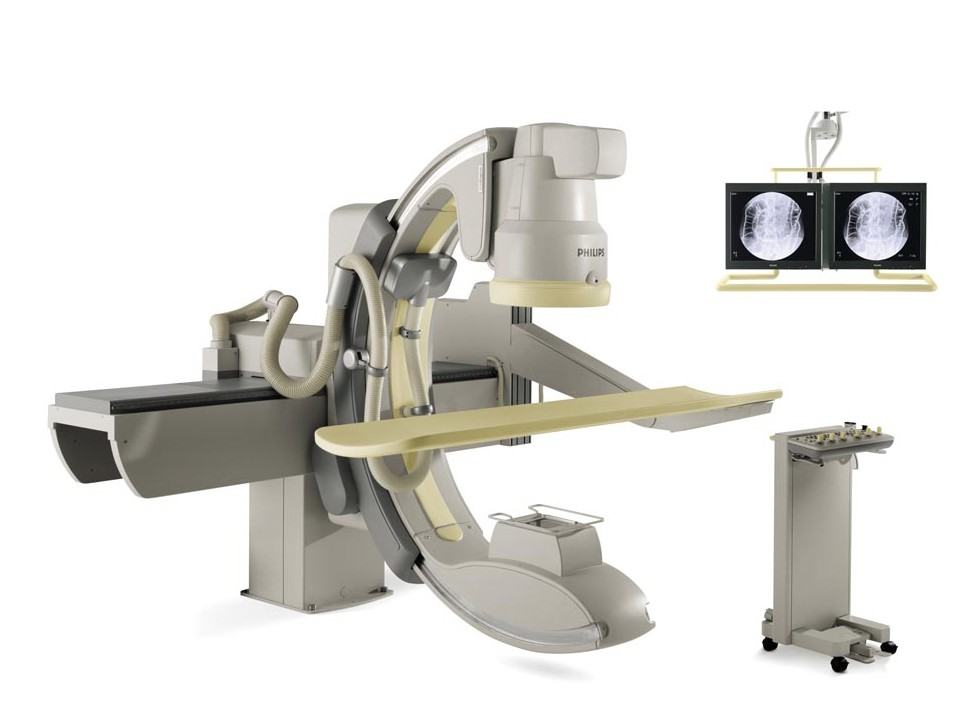X-ray image intensifier
Editor-In-Chief: C. Michael Gibson, M.S., M.D. [1]
Associate Editor-In-Chief: Cafer Zorkun, M.D., Ph.D. [2]
Please Take Over This Page and Apply to be Editor-In-Chief for this topic: There can be one or more than one Editor-In-Chief. You may also apply to be an Associate Editor-In-Chief of one of the subtopics below. Please mail us [3] to indicate your interest in serving either as an Editor-In-Chief of the entire topic or as an Associate Editor-In-Chief for a subtopic. Please be sure to attach your CV and or biographical sketch.
Overview
An X-ray image intensifier (XRII), sometimes called a C-Arm, refers to a special image intensifier device used in medical imaging involving x rays. It consists of an input window, input phosphor, photocathode, vacuum and electron optics, output phosphor and output window. It allows for lower x-ray doses to be used on patients by magnifying the intensity produced in the output image, enabling the viewer to easily see the structure of the object being imaged. They were introduced by Philips in 1955.
Clinical Applications
An image intensifier or II is used in two ways:
- As a Fixed piece of equipment in a dedicated screening room
- Mobile Equipment for use in theatre

Fixed Image Intensifiers
These are used in most xray departments as 'screening rooms'. The types of investigations for which this machine can be used for is vast. Examples include:
- Barium Studies (Swallows, Meals, Enemas)
- Endoscopy Studies (ERCP)
- Fertility Studies (HSG)
- Angiography Studies (Peripheral, Central and Cerebral)
- Thereaputic Studies (Line placements i.e. Permacath / Hickman, Transjugular Biopsies, TIPS Stent, Embolisations)
- Cardiac Studies (PTCA)
Mobile Image Intensifiers (MII)
Smaller in design than a fixed image intensifier, mobile screening units are becomming more and more powerful. This has enabled more advanced and technical procedures to be carried out in confined locations. MII's are routinely used in most hospitals for:
- Orthopaedic Imaging in theatre (DHS, ORIF's and MUA's)
- Neurolgical Imaging in theatre
- Endovascular Imaging in theatre (EVAR)
- Therapeutic Procedures in theatre (pain clinic)
Technical Capabilites
Image intensifiers are usually set up for two purposes. For either plain fluoroscopy or digital subtraction angiography (DSA). All image intensifiers are set up with software capable of adjusting settings to suit different user requirements, depending on the procedure and body area being imaged. In simple flouroscopy for example, imaging of the throat would not require the same amount of exposure as that of the abdomen. And on DSA capable models, preset programs are available which enables the user to decide a rate of how many images or frames per second are acquired.